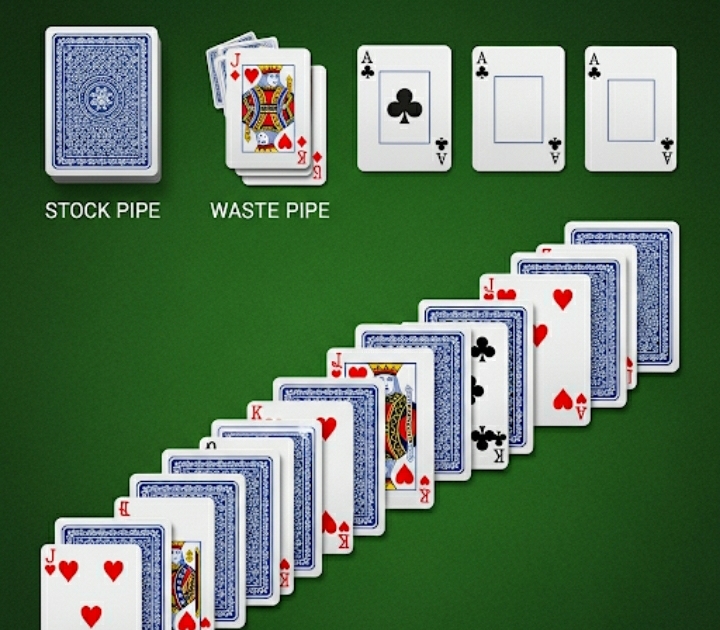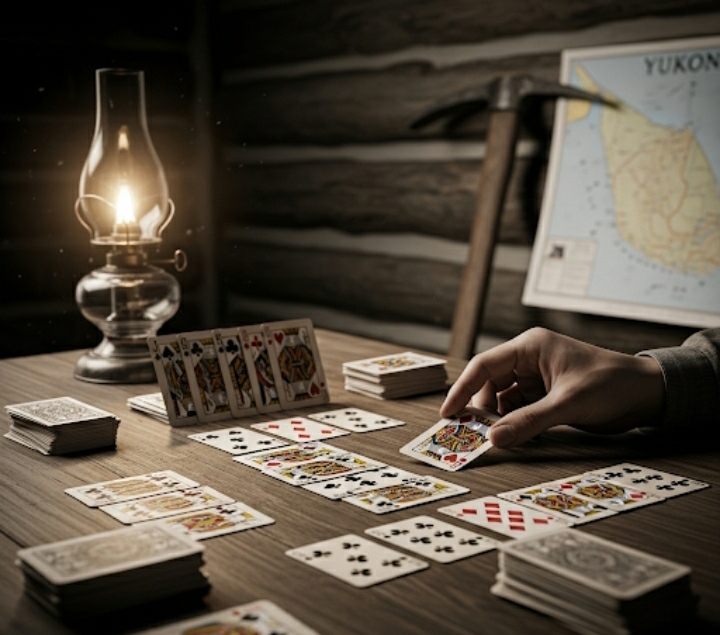Last Tuesday night, I found myself in a heated debate with my neighbor about which solitaire game reigns supreme. She swore by Spider Solitaire’s strategic complexity, while I defended Klondike’s timeless appeal. This got me thinking – how many card game enthusiasts actually understand the fundamental differences between these two solitaire giants?
Spider Solitaire vs. Klondike represents one of the most interesting comparisons in digital card gaming. While both games fall under the solitaire umbrella, they offer dramatically different experiences that cater to various skill levels and preferences. Whether you’re a casual player looking to pass time or a strategic thinker seeking mental challenges, understanding these differences will help you choose the perfect game for your mood and goals.
In this comprehensive guide, you’ll discover the unique gameplay mechanics, difficulty levels, strategic approaches, and historical backgrounds of both games. By the end, you’ll know exactly which solitaire variant matches your playing style and why millions of players worldwide have passionate preferences for one over the other.
The Fundamental Rules: How Each Game Works
Klondike Solitaire: The Classic Foundation
Klondike solitaire, often simply called “Solitaire,” uses a standard 52-card deck arranged in seven columns. The leftmost column contains one card (face up), the second column has two cards (one face down, one face up), and this pattern continues until the seventh column holds seven cards with only the top card visible.
The objective seems straightforward: build four foundation piles from Ace to King in each suit. However, the challenge lies in the tableau manipulation – you can only place cards in descending order with alternating colors (red on black, black on red). Empty tableau columns can only be filled with Kings, creating strategic bottlenecks that separate novice players from experts.

Spider Solitaire: The Multi-Deck Challenge
Spider Solitaire operates on an entirely different principle, using two complete decks (104 cards total) distributed across ten columns. Unlike Klondike’s alternating color requirement, Spider focuses purely on suit sequences – you’re building complete runs from King to Ace within the same suit.
The game offers three difficulty levels: one-suit (easiest), two-suit (moderate), and four-suit (expert). This scalability makes Spider appealing to players who want to gradually increase their challenge level. Empty columns can be filled with any card or sequence, providing more flexibility than Klondike’s King-only rule.
Key Differences in Gameplay Mechanics
| Feature | Klondike Solitaire | Spider Solitaire |
|---|---|---|
| Decks Used | 1 standard deck (52 cards) | 2 standard decks (104 cards) |
| Columns | 7 tableau columns | 10 tableau columns |
| Building Rule | Alternating colors, descending | Same suit, descending |
| Empty Column Rule | Kings only | Any card or sequence |
| Foundation | 4 suit-specific piles | 8 complete sequences |
| Stock Pile | Draw 1 or 3 cards | Deal 10 cards across columns |
| Difficulty Variations | Limited variations | 3 distinct difficulty levels |
Strategic Depth and Complexity
The strategic approaches for these games differ significantly. Klondike rewards careful stock pile management and tableau optimization. Every decision about whether to draw from the stock or make a tableau move impacts your winning chances. Expert players often memorize stock pile sequences and plan several moves ahead.
Spider Solitaire, conversely, emphasizes pattern recognition and sequence building. The ability to move partial sequences (as long as they’re in proper suit order) creates complex strategic possibilities. Advanced players develop sophisticated techniques for “clearing columns” and managing multiple sequences simultaneously.
Difficulty Levels and Learning Curves
Klondike: Deceptively Simple, Strategically Complex
Most players can grasp Klondike rules within minutes, making it the perfect gateway drug to solitaire gaming. However, achieving consistent wins requires understanding advanced concepts like stock pile cycling, tableau space management, and foundation timing. Statistics show that even skilled players win only 25-30% of randomly dealt Klondike games.
Spider: Graduated Challenge System
Spider’s three difficulty modes create a natural progression path:
- One-Suit Spider: Uses only spades, making it relatively approachable for beginners
- Two-Suit Spider: Introduces hearts alongside spades, requiring more careful planning
- Four-Suit Spider: The ultimate challenge, demanding exceptional pattern recognition and strategic thinking
This graduated system allows players to build confidence and skills progressively, unlike Klondike’s single difficulty level that can frustrate beginners and bore experts.
Historical Context and Cultural Impact
Klondike’s Gold Rush Origins
Klondike Solitaire earned its name during the 1890s Klondike Gold Rush, when prospectors played cards to pass time during harsh Canadian winters. The game’s association with perseverance and solitary determination resonated with American frontier culture, eventually becoming synonymous with computer solitaire when Microsoft bundled it with Windows in 1990.

Spider’s Modern Evolution
Spider Solitaire emerged later, gaining popularity through computer implementations in the 1990s. Its design philosophy reflects modern gaming principles – scalable difficulty, multiple winning paths, and emphasis on skill development rather than luck. This approach appeals to contemporary players who prefer games that reward practice and strategic thinking.
Which Game Should You Choose?
Choose Klondike If You:
- Enjoy quick 5-10 minute gaming sessions
- Prefer games that blend luck and strategy
- Like the classic, nostalgic solitaire experience
- Want to improve pattern recognition with alternating colors
- Enjoy the challenge of working with limited resources
Choose Spider If You:
- Have 15-30 minutes for deeper strategic gameplay
- Want to progressively increase difficulty levels
- Enjoy pure strategy with minimal luck factors
- Like organizing and building complex sequences
- Prefer games with multiple winning approaches
Advanced Tips for Both Games
Experienced players develop game-specific techniques that dramatically improve their win rates. In Klondike, mastering stock pile management becomes crucial – knowing when to cycle through the deck versus making tableau moves separates good players from great ones. Focus on exposing face-down cards early and maintaining tableau flexibility.
Spider players benefit from learning column-clearing techniques and sequence manipulation strategies. The key insight involves recognizing when to break perfect sequences to create better long-term positions. Advanced players often sacrifice short-term progress for superior column organization.
Digital Adaptations and Modern Variations
Both games have evolved significantly in digital formats. Modern implementations offer hint systems, unlimited undo features, and statistics tracking that enhance the traditional experience. Mobile versions adapt these classic games for touchscreen interfaces while maintaining their core strategic elements.
Some innovative variations combine elements from both games, creating hybrid experiences that appeal to players seeking fresh challenges while honoring classic gameplay principles.
Conclusion
The Spider Solitaire vs. Klondike debate ultimately comes down to personal preference and playing style. Klondike offers the perfect blend of accessibility and challenge for players who enjoy quick strategic sessions with nostalgic appeal. Spider Solitaire provides a more methodical, skill-based experience that rewards patience and strategic planning.
Both games deserve places in every card game enthusiast’s repertoire. Why not try both and discover which style resonates with your strategic preferences? Whether you choose the gold rush charm of Klondike or the methodical mastery of Spider, you’ll be engaging with decades of gaming evolution and strategic depth.
Which game will you try first? Share your preference in the comments below, and let us know what draws you to your chosen solitaire style!
Frequently Asked Questions
Q: Which solitaire game is harder – Spider or Klondike? A: Four-suit Spider Solitaire is generally considered more challenging than Klondike due to its complex sequence-building requirements and strategic depth. However, one-suit Spider is actually easier than Klondike for most players.
Q: Can you always win Spider Solitaire and Klondike? A: Not every deal is winnable in either game. Klondike has approximately 79% winnable deals, while Spider Solitaire’s winnability varies by difficulty level – one-suit Spider has nearly 100% winnable deals, while four-suit Spider drops to around 67%.
Q: What’s the average game time for each solitaire variant? A: Klondike games typically take 5-10 minutes, while Spider Solitaire sessions often last 15-30 minutes due to the larger card count and more complex decision-making processes.
Q: Which game is better for beginners learning solitaire? A: Klondike is generally better for absolute beginners due to its simpler rules and faster gameplay. However, one-suit Spider Solitaire can also work well for beginners who prefer longer, more methodical games.
Q: Do professional card players prefer one game over the other? A: Professional players and serious enthusiasts often prefer Spider Solitaire for its strategic depth and skill-based gameplay. However, many appreciate Klondike for its historical significance and perfect balance of luck versus strategy.
Q: Are there tournament versions of these solitaire games? A: Yes, both games have competitive formats. Spider Solitaire tournaments are more common due to the game’s emphasis on skill over luck, while Klondike competitions often use standardized deals to ensure fairness.
Sources:
- Microsoft Solitaire Collection – Official Game Statistics and Rules
- American Contract Bridge League – Solitaire Games History and Analysis
- BoardGameGeek – Comprehensive Solitaire Game Database